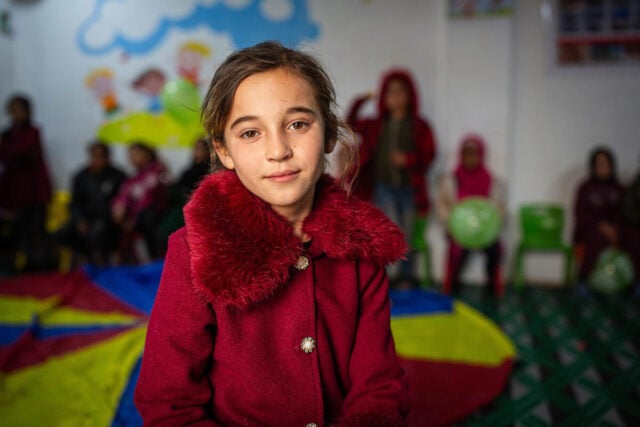When the 7.8-magnitude earthquake struck southern Turkey (officially the Republic of Türkiye) and northwest Syria on February 6, 2023, it caused devastating destruction. World Vision swiftly responded to the heightened challenges faced by the survivors, including those made vulnerable by the ongoing conflict in Syria. The catastrophic event worsened conditions in a region already hosting thousands of Syrian refugees.
Your immediate and generous support played a crucial role in alleviating the suffering caused by displacement, heightened levels of hunger, malnutrition, and limited access to healthcare and educational support. Your gifts enabled the timely delivery of vital assistance to over 1.8 million people affected in Turkey and Syria within the first year. Hope endured for so many vulnerable children throughout the year in their most difficult times. Children like Baker*, who was orphaned by the destruction, have reclaimed their smiles. For girls like Sahar*, new dreams are beginning to unfold as her nightmares fade away.
*Names changed to protect identity.
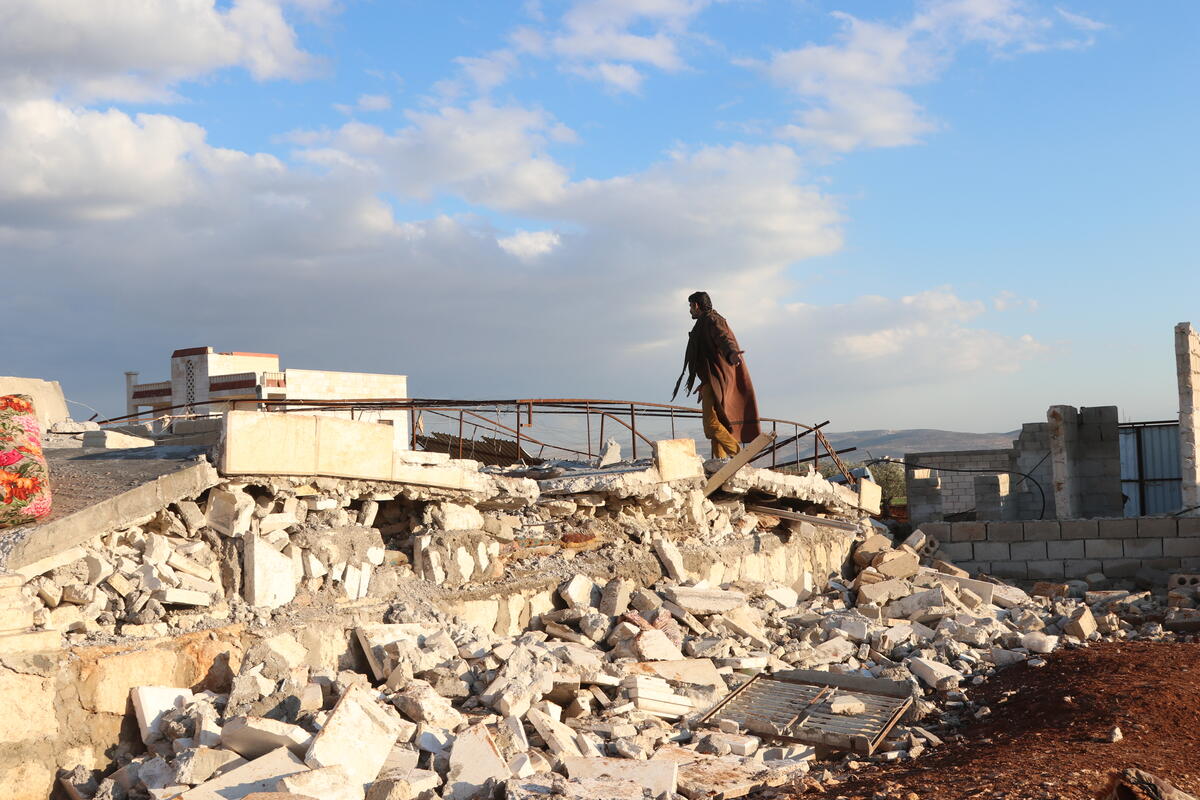
2023 Turkey–Syria earthquake: Facts, FAQs, and how to help
- Fast facts: 2023 Turkey–Syria earthquake
- How many people were affected by the earthquake in Turkey and Syria?
- How did World Vision respond to the earthquake, how were people helped?
- How can I help earthquake survivors today?
- Where did the 2023 Turkey–Syria earthquake strike?
- In what ways were survivors affected by the aftermath of the earthquake?
- What are the ongoing risks faced by children after the earthquake?
- How long has World Vision served in the Middle East region?
Fast facts: 2023 Turkey–Syria earthquake
- On February 6, 2023, a 7.8-magnitude earthquake rocked southeast Turkey near the Syrian border, with thousands of aftershocks.
- In Syria, the earthquake exacerbated the effects of the ongoing war, deepening the crisis for approximately 3.7 million children.
- According to the U.N. Refugee Agency (UNHCR), the earthquake impacted an estimated 15.73 million people in Syria and Turkey.
- In Turkey, 2.5 million children — many of them Syrian refugees — faced an increased risk of poverty, child labor, or child marriage in the aftermath of the disaster.
- Turkey hosts the largest number of refugees in the world, including some 3.6 million Syrians, according to UNHCR.
- World Vision responded swiftly to the disaster and, within the first year of response, helped more than 1.8 million people affected in Turkey and Syria.
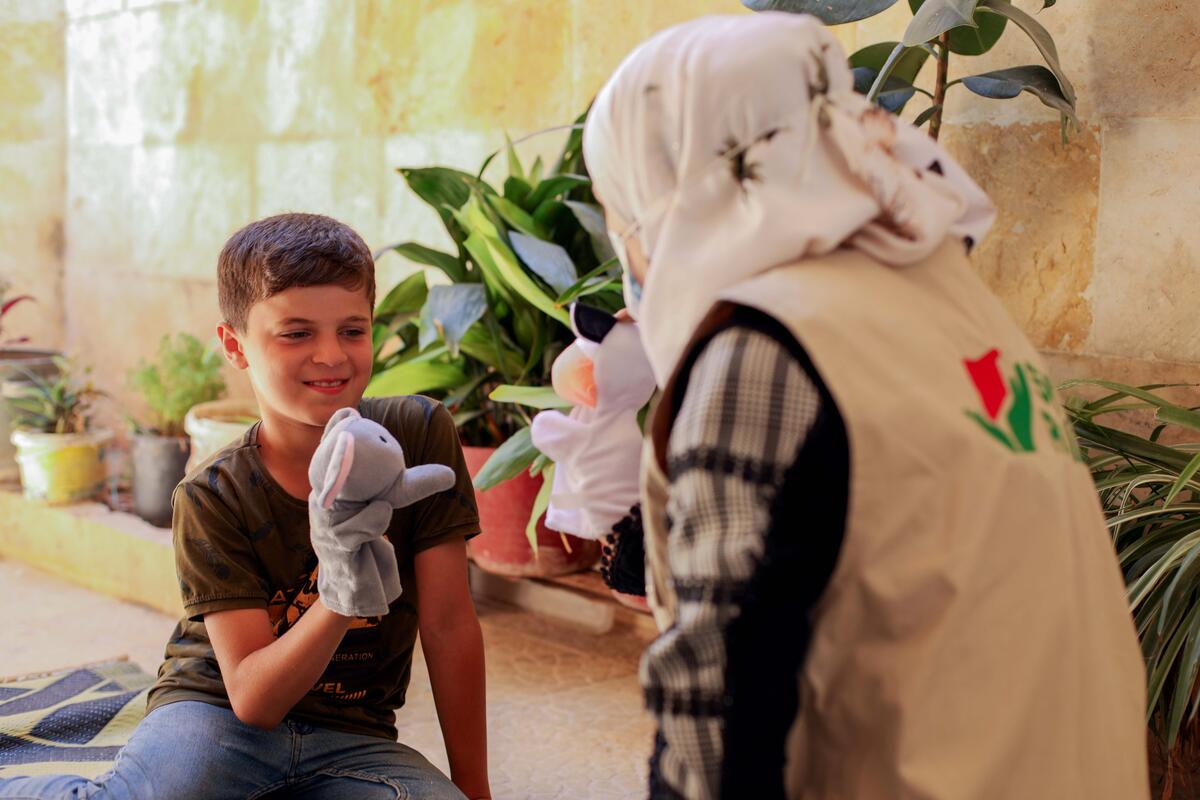
“I am happy now. I am back in school with my friend Saleem*, I have other friends too and we play together and I love the [psychological and education] activities,” says Baker*.
How many people were affected by the earthquake in Turkey and Syria?
The disaster impacted at least 15.73 million people in Turkey and Syria, with over 55,000 lives lost and nearly 130,000 injured. Millions were displaced from their homes.
How did World Vision respond to the earthquake, and how were people helped?
In the year following the devastating earthquake, World Vision provided critical support to more than 1.8 million people. Our efforts included delivering vital essentials such as food, heaters, fuel, hygiene kits, cash assistance, and more.
In collaboration with 15 local organizations, World Vision reached areas like Aleppo, Afrin, Azaz, and Idlib in northern Syria, and Gaziantep and Sanliurfa in Turkey.
Through our partnership and already being present in the area when the earthquake struck, World Vision initiated psychological support sessions in schools. This endeavor helped over 1,300 children like 9-year-old Sahar* move from fear to healing. She has endured lifelong instability caused by war, displacement, and now the devastating earthquake that destroyed her home and school in their newfound community in northwest Syria. She was studying when the house collapsed. “I am afraid to go to school. I don’t want the building to fall down when I start studying again,” Sahar says. With World Vision’s support, she resumed her education and is flourishing. Sahar has now paved her way for new dreams.
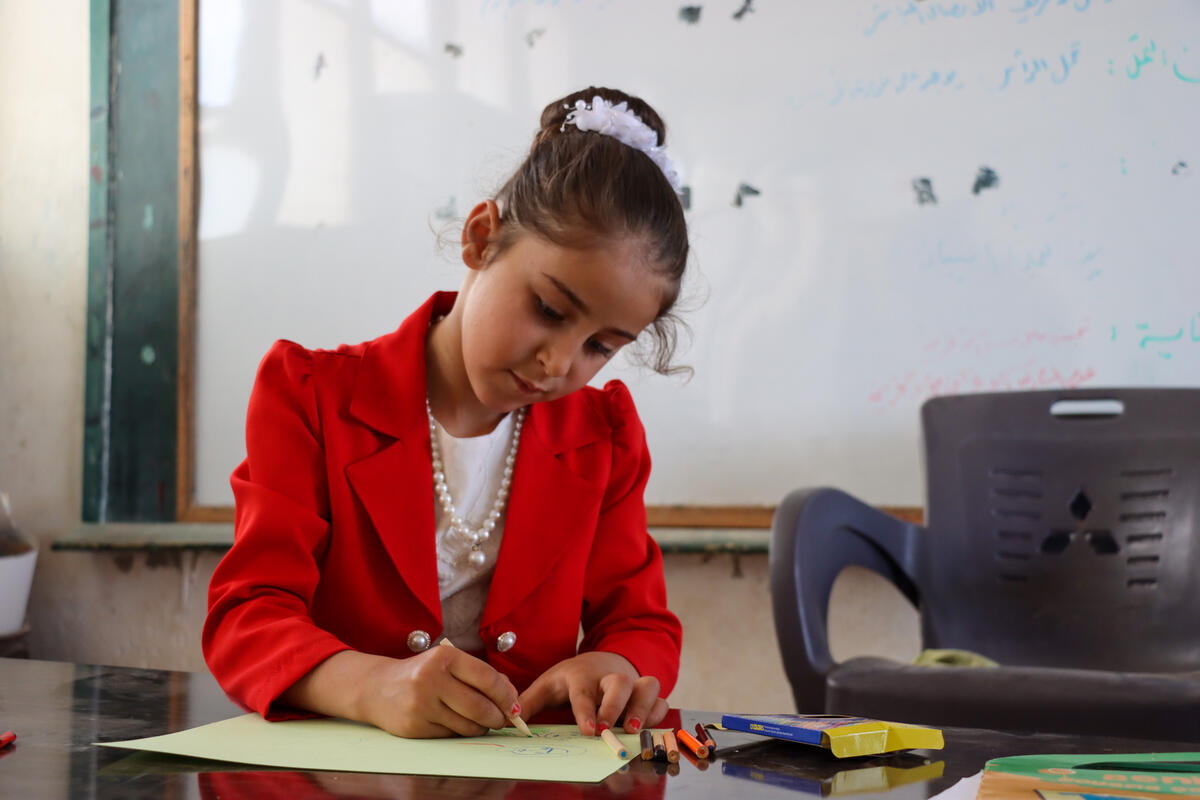
“I have five friends. We play together, they’re like my sisters. I love teacher Dina who helped me to go back to school,” says Sahar. “I want to finish my education and be a doctor!”
How can I help earthquake survivors today?
You can help World Vision continue to respond to disasters around the world this earthquake.
- Pray: Join us in praying for all those affected by this tragedy.
- Give: Your gift will help vulnerable people who are affected by disasters recover and rebuild
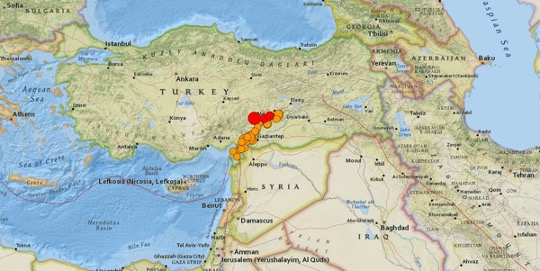
Where did the 2023 Turkey–Syria earthquake strike?
The earthquake struck near the Turkish cities of Nurdağı and Gaziantep in Gaziantep Province, just outside the regional capital, which hosts millions of Syrian refugees.
In Turkey: The disaster compounded the already dire situation in the area, beset by the ongoing Syria conflict and refugee crisis. Eleven Turkish provinces, including Adana, Gaziantep, Kahramanmaras, and Sanliurfa, were hit, affecting nongovernmental organizations supporting Syrians through cross-border humanitarian operations.
In Syria: The quake severely impacted the cities of Aleppo, Latakia, Hama, and Idlib, causing significant damage and resulting in the collapse of numerous buildings and the destruction of water systems.
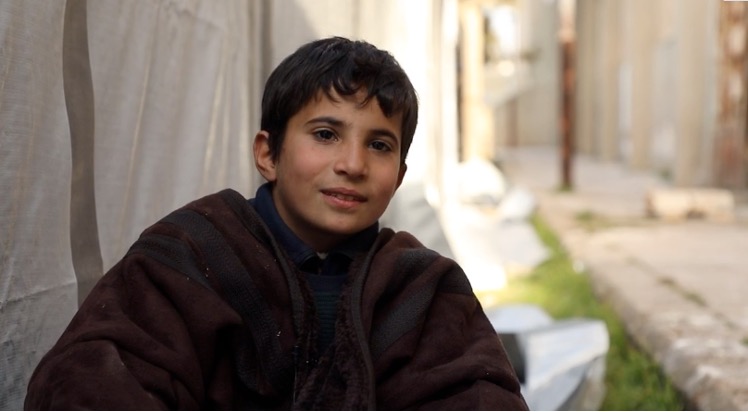
In what ways were survivors affected by the aftermath of the earthquake?
The earthquake’s aftermath deeply affected survivors in Turkey and Syria, worsening the already severe humanitarian crisis. The ongoing emergency in Syria stands as one of the world’s largest crises, further intensified by the earthquake’s extensive aftermath:
- Nearly 50,000 buildings, including critical infrastructure like schools and hospitals, suffered significant damage or were completely destroyed.
- Access to essential healthcare in northwest Syria was severely disrupted, with nearly one-third of health centers non-operational and 70 others damaged, according to OCHA.
- Disrupted schooling and housing loss heightened vulnerabilities among children, increasing the risks of exploitation and family separation.
- In August 2023, over 265,000 people in Syria urgently needed proper housing due to the disaster’s destruction of homes.
- Scorching summer temperatures in 2023 triggered more than 40 devastating fires, damaging tents, and taking several lives, further exacerbating the crisis.
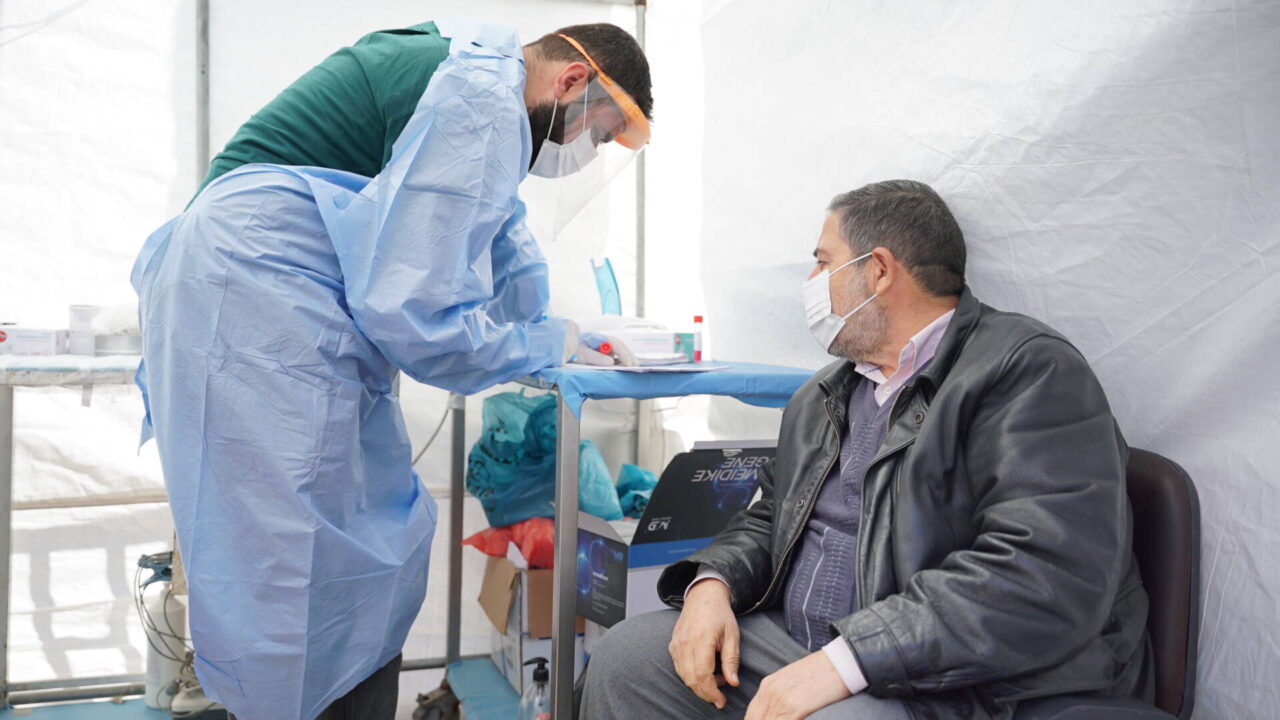
What are the ongoing risks faced by children after the earthquake?
Millions of children in Syria and Turkey are still in need of humanitarian aid and face various challenges. As of August 2023:
- At least 2.5 million children in Turkey (including many Syrian refugees) and 3.7 million children in Syria need continued humanitarian assistance, according to UNICEF.
- The widespread damage to water systems in the region has placed millions of children at risk of waterborne diseases like cholera and Hepatitis A, necessitating urgent action to prevent outbreaks.
- In Syria, mental health support for children was at high demand. Even before the earthquake, many children in conflict-affected areas were already showing signs of post-traumatic stress disorder and alarming suicidal thoughts.
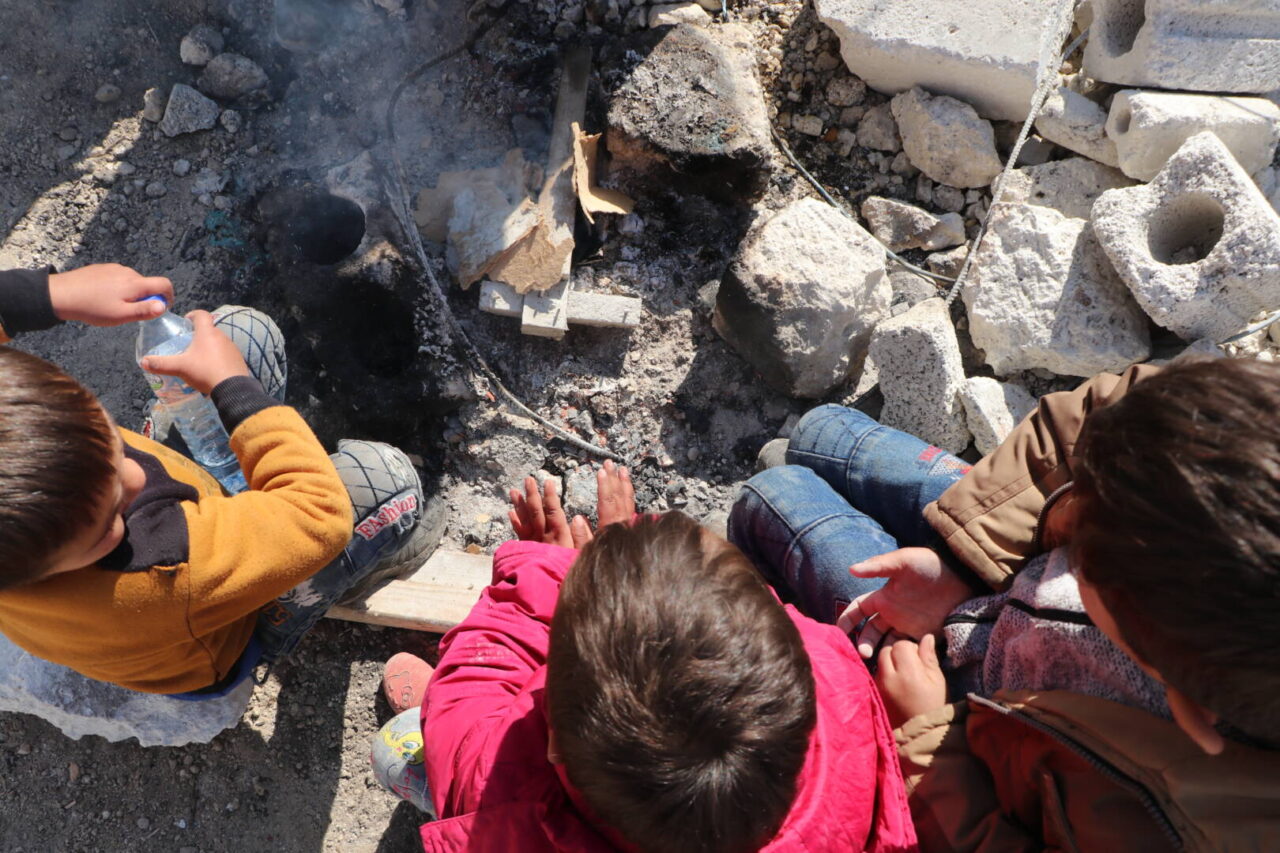
How long has World Vision served in the Middle East region?
For nearly 40 years, World Vision has served the most vulnerable communities in the Middle East. We’re dedicated to improving the lives of children, families, and communities through long-term sustainable development and responding to disasters.
World Vision swiftly supported Syrian families who fled to Lebanon in 2011. Since then, our work has expanded to other countries hosting Syrian refugees and into Syria. Children and their long-term needs are always our first priority.
Since the start of the Syrian refugee crisis, we’ve helped more than 7.5 million children and their families in the region. World Vision continues to aid children and families in Syria, Jordan, and Turkey, all of whom have suffered from ongoing conflict and the resulting humanitarian crisis.


